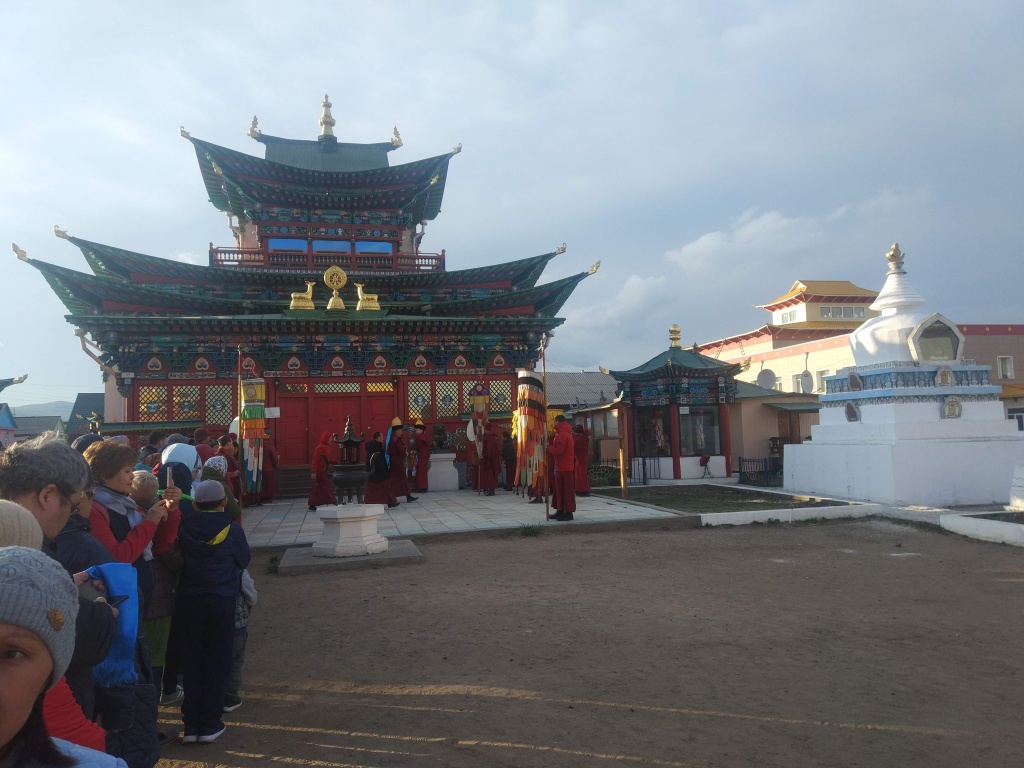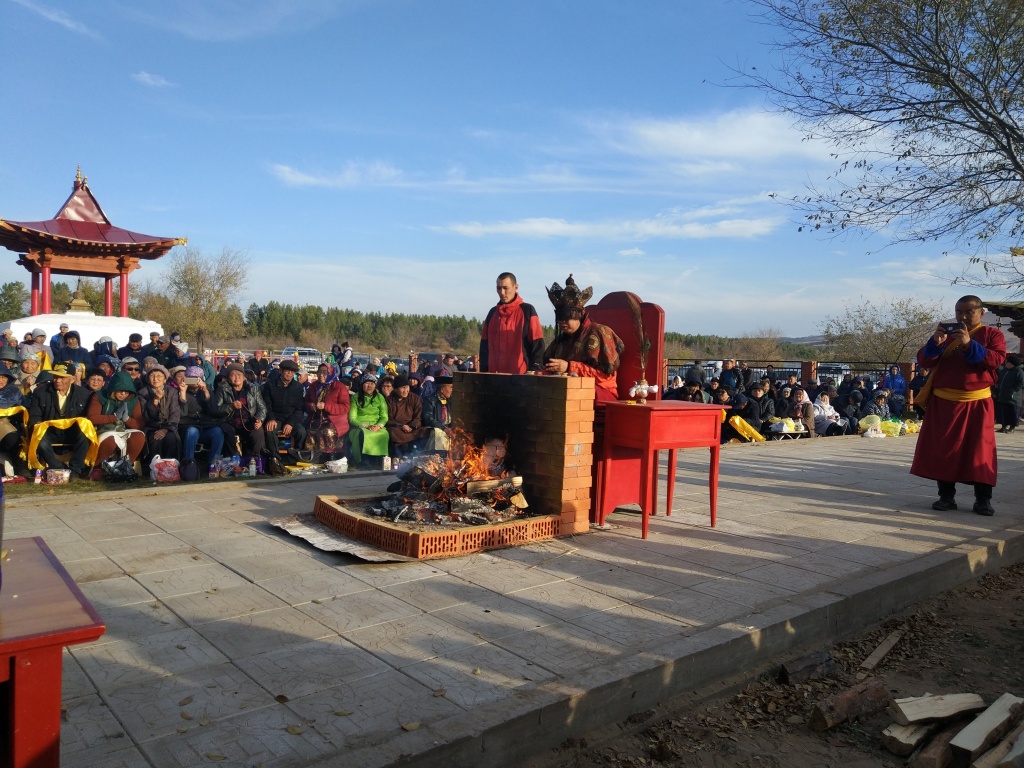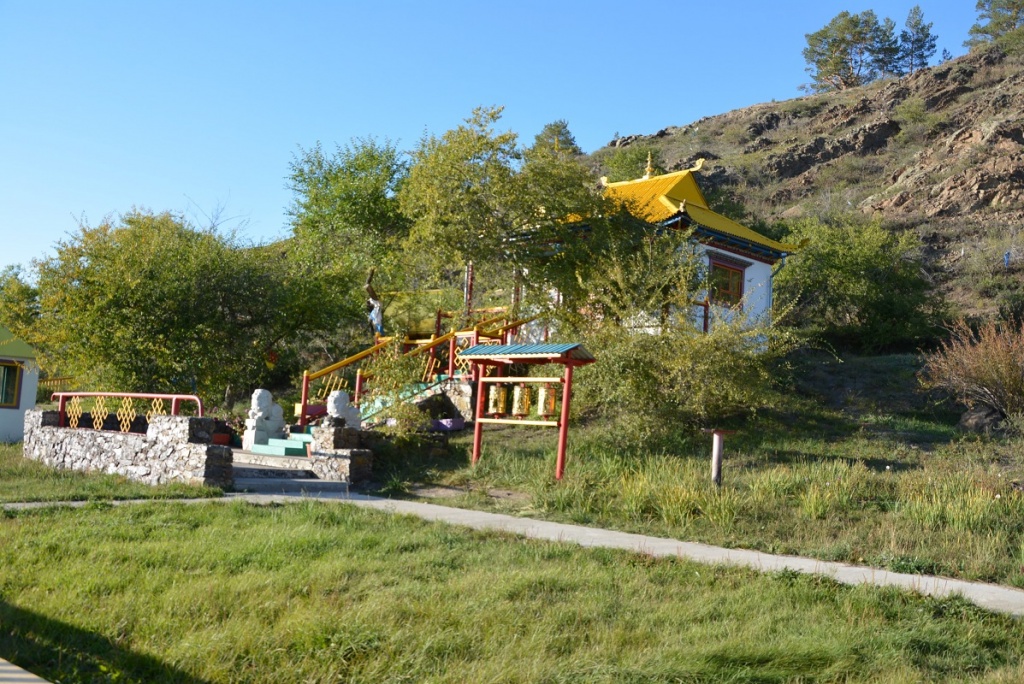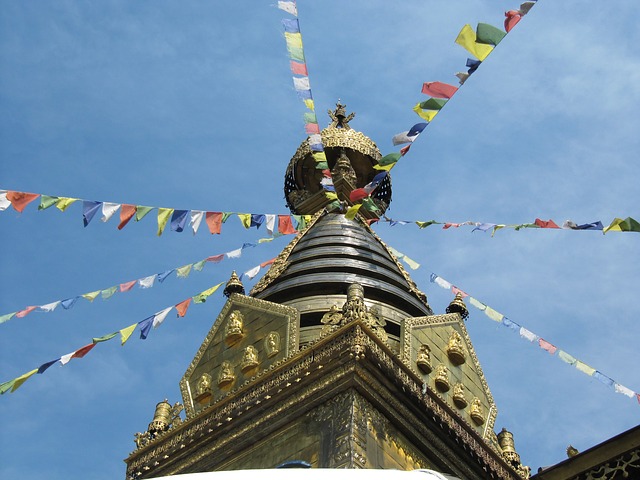On the steppes at the foot of the Khamar-Daban, on a quiet tract of land 30 km from Ulan-Ude, is the spiritual capital of the traditional Buddhist congregation of Russia — the Ivolginsky Datsan (or Buddhist temple).
Ivolginsky datsan, built in 1945, now called the spiritual capital of the Buddhists of Russia. It is the largest Buddhist complex in the country. Its construction began the history of the revival of Buddhist tradition in Russia, almost completely destroyed in the first decades of Soviet power. At the turn of XIX–XX centuries in Asian part of Russia were more than 150,000 Buddhists, there were more than 150 sume (small temples) and 30 temples. However, after the revolution of 1917, all religious denominations, including Buddhism, began the persecution.

To the surprise of many after the great Patriotic war, the authorities went on a small assignment. Although the restoration of old Buddhist temples of the XVIII century the community was denied, the authorities have allocated land in a swampy area near the village of Upper Oriole. One of the Buryat wealthy families donated to the temple own small house. He was decorated by volunteers and llamas, also unexpectedly amnestied after the war. It is from this building later grew up in Ivolginsky datsan.
This Bayasgalant LZ Norm Hardin of HIID" — so completely is the title of the datsan in the Buryat and is translated as "monastery, where revolves the wheel of doctrine, full of joy and bringing happiness".
In the Tibetan tradition the temples are called "faculties" of Buddhist universities that studying philosophy and medicine in monasteries.

However, in Russia, probably due to long periods of isolation of Buddhism from external influences outside the temple were fixed the value of not only the University but also of the monastery. Today in Russia there are about 3 million Buddhists — it is the third largest denomination in the country. The monastery complex Ivolginsky datsan consists of eight structures, including churches, the library, as well as Russia's only Buddhist University.em in which studying philosophy and traditional Tibetan medicine.
His fame spread far beyond Russia. It is connected not only with today's spiritual education, but also with the name Dashi-Dorzho Itigelov — the head of Buddhists of Russia the beginning of XX century, a companion of the Dalai Lama.Itigelov before his death in 1927 asked the monks about two things: to read a special funeral prayer and "to see his body after 30 years." The monks did not dare to read such a prayer to the living master. Then Itigelov, taking the Lotus position, he began to read it and so has gone to a better world. Without changing the position of the body, he was buried in cedar sarcophagus in Huge-take vitamin complex, near Ulan-Ude. In 1957, to the time when it was examined for the first time on the territory of the Ivolginsky datsan was already a small temple-sume and a few houses for lamas. On the body of Itigelov was no sign of decay.

After the ceremonies and the change of apparel the body was again buried. The next time the undecayed body of Itigelov was raised in 1973 and re-buried. In September 2002, the sarcophagus was dug up. Scientists are always skeptical about such stories, offered to make the examination of the body. It showed that Itigelov joints remains movable, and the skin soft. Experts are unable to explain this phenomenon.
The monks knew the answer. They moved the body Itigelov at the Buddhist temple and, along with volunteers, have erected a special building, the most beautiful in the entire complex of the temple. Today, pilgrims from nearby regions and from other countries come specifically to see the undecayed body of the twelfth Khambo Lama. It is believed that Itigelov helps those who ask. And datsan continues to evolve.

